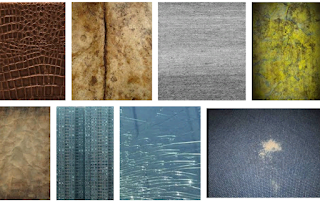A paragon of the practice’s ideals, the new KSM Architecture Design Studio is climatically sensitive, environmentally sustainable and sits beautifully amid Chennai’s emerging commercial hub, while retaining the 380sq. m. site’s narrative.
The east-facing plot on a typically Indian street already housed a 35-year-old temple and four trees. Each element becoming to the design, the bright and colourful temple stands in contrast to the rustic and earthen colours of the studio, while the trees offer shade against the harsh climate. The studio is a simple volumetric play of masses, a two-storey container-like structure set amidst the existing site narrative, exhibiting architectural sketches right from the roadside.
Its façade is enveloped in a distinct, self-sustaining skin that tackles the climate; its textural and visual quality almost poetic.
Bamboo curtains composed of cut bamboo culms and steel rods, form the eastern and southern façade, diminishing morning and afternoon glare, while creating a beautiful chiaroscuro within. The screen also catches the prevailing southern breeze to ventilate the workspaces; and acts as a dust trap. Motorised wind catchers enhance the flow of ambient breeze. A bio canopy of evergreen, indigenous Jasmine creepers along the northern side shades glazed doors; while a bio-wall, covered in evergreen Passionflower creepers acts as a heat insulator on the western façade. Openings, few in number, are strategically placed, deep set and designed to optimise interior temperatures.
The entire structure is housed under a polyfill roofing slab with a layer of high solar-reflective-index tiles to insulate the space within. A cafeteria on the terrace is covered by an inclined bamboo roof that shades and directs cool sea breeze into the studio through top-hung openings, while skylights set in trapezoidal cones let diffused light in.
Yard spaces covered in pervious concrete beds harvest rainwater. The design effectively utilises rainwater, natural light and winds. The intelligent use of resources and passive design techniques considerably improve the interior climate while creating a charming melody of textures.
Once inside, the disparate masses combine into a singular volume, a sense of unity and connectedness taking over. Five different levels created on either side of a central void efficiently house the various functions of the architecture and the engineering studio: a library, a workshop and principal designers’ workspace. A series of straight flight and split-spiral staircases offer a rhythmic link between the levels. Textures, visual and sensory, of the local Tandur stone, pinewood shuttered concrete and steel sections enhance the experience. Even the furniture, sleek concrete workstations, pinewood and plumbing pipe shelves, pop-of-colour chairs, all seamlessly fit into the space.
Src: amazines
Advertisement







EmoticonEmoticon